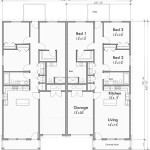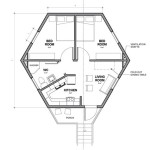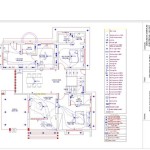Do You Need Planning Permission To Build A House In Your Garden?
Building a house in a garden, often referred to as "garden grabbing," is an increasingly common practice driven by factors such as rising property prices and a desire to maximize land use. However, the process isn't as straightforward as simply deciding to build. The primary hurdle is often navigating the complexities of planning permission. Determining whether planning permission is required is crucial before commencing any construction. Failure to obtain the necessary permission can lead to enforcement action by the local planning authority, including demands to demolish the structure.
The need for planning permission for a new dwelling in a garden hinges on numerous factors, encompassing the size of the proposed building, its intended use, its proximity to existing structures and boundaries, and local planning policies. A thorough understanding of these factors is essential for homeowners contemplating such a project.
Understanding the Definition of a 'Dwelling'
At the heart of the planning permission question lies the legal definition of a 'dwelling.' A dwelling, in planning terms, is a self-contained unit designed for independent living. This encompasses essential amenities such as a kitchen, bathroom, and living space. If the proposed structure meets this definition, it's highly likely to require planning permission. Even if the structure is intended for use by family members, such as elderly parents or adult children, it still falls under the definition of a dwelling if it possesses these self-contained facilities.
The intention behind the structure's use is also a significant consideration. If the structure is intended for permanent residential use, planning permission will almost certainly be required. Conversely, if the structure is intended for ancillary use, such as a home office or a recreational space, it may be possible to avoid the need for full planning permission, potentially falling under permitted development rights, which are discussed later.
It is crucial to consider the visual impact of the proposed dwelling. Local planning authorities often assess whether the new dwelling would be out of character with the surrounding area. Factors such as the height, bulk, and design of the proposed dwelling are scrutinized to determine its impact on the street scene and the overall character of the neighborhood. Dwellings that are visually prominent or significantly different in design from existing properties are more likely to require planning permission and face greater scrutiny during the application process.
Permitted Development Rights: A Potential Alternative
While building a completely new house typically necessitates planning permission, there are instances where ‘permitted development rights’ might apply. Permitted development rights allow certain types of development to be carried out without the need for a full planning application. These rights are granted by the government and are subject to specific limitations and conditions.
For garden buildings, permitted development rights often apply to structures that are considered "incidental" to the enjoyment of the main dwelling house. This typically includes structures such as sheds, greenhouses, and summerhouses. However, the rules governing permitted development rights are complex and vary depending on factors such as the size of the garden, the location of the property (e.g., within a conservation area), and the type of building being proposed.
Crucially, permitted development rights do not generally extend to the construction of a completely separate dwelling. If the proposed structure is self-contained and intended for use as a permanent residence, it's highly unlikely to fall within the scope of permitted development rights. Even if the structure is initially intended for ancillary use, its long-term use is a critical factor. If there's a reasonable expectation that the structure will eventually be used as a separate dwelling, the planning authority may consider it a breach of planning control, potentially leading to enforcement action.
It's highly advisable to obtain a Lawful Development Certificate (LDC) from the local planning authority before proceeding with any development that relies on permitted development rights. An LDC is formal confirmation that the proposed development is lawful and does not require planning permission. This provides peace of mind and protects homeowners from potential enforcement action in the future.
Key Factors Influencing Planning Permission Decisions
When assessing a planning application for a new dwelling in a garden, local planning authorities consider a range of factors to determine whether to grant or refuse permission. These factors are typically outlined in the local development plan, which sets out the planning policies and guidelines for the area. Understanding these key considerations is vital for preparing a strong planning application and increasing the chances of a successful outcome.
One of the most critical factors is the impact on the amenity of neighboring properties. Planning authorities aim to protect the living conditions of nearby residents, ensuring that new development does not unduly affect their privacy, daylight, or outlook. Proposals that result in significant overlooking, shading, or noise pollution are likely to be refused. Careful consideration should be given to the positioning and design of the proposed dwelling to minimize its impact on neighboring properties.
Another key consideration is the impact on the character and appearance of the area. Planning authorities seek to ensure that new development is in keeping with the existing character of the neighborhood. This includes factors such as the style of architecture, the materials used, and the overall scale and massing of the building. Proposals that are considered out of character or visually intrusive are likely to be refused. A well-designed dwelling that complements its surroundings is more likely to be approved.
Access and parking are also important considerations. Planning authorities require adequate off-street parking to be provided for new dwellings, to avoid exacerbating existing parking problems in the area. The access to the site must also be safe and convenient for both vehicles and pedestrians. Proposals that create traffic congestion or compromise road safety are likely to be refused.
The environmental impact is another key factor. Planning authorities seek to minimize the environmental impact of new development, protecting natural resources and promoting sustainable design. This includes factors such as energy efficiency, water conservation, and the use of sustainable building materials. Proposals that incorporate green features and minimize their environmental footprint are more likely to be approved.
Local planning policies play a pivotal role in determining the outcome of a planning application. These policies are set out in the local development plan and provide a framework for decision-making. Applicants should carefully review the relevant policies and demonstrate how their proposal complies with them. Policies may address issues such as density, housing mix, and the protection of open space. A clear understanding of the local planning policies is essential for preparing a successful application.
Finally, it's worth noting that the council's planning department will notify neighboring properties, giving them the opportunity to comment on the proposed development. These comments are taken into consideration when determining the outcome of the application. It is therefore beneficial to engage with neighbors early in the process to address any concerns they may have. Addressing concerns proactively can increase the chances of obtaining planning permission.
Navigating the planning permission process can be complex and time-consuming. Seeking professional advice from a planning consultant can be invaluable. A planning consultant can provide expert guidance on the relevant planning policies, assess the likelihood of obtaining permission, and prepare a strong planning application. They can also liaise with the local planning authority on your behalf. The investment in professional advice can significantly increase the chances of a successful outcome and save time and stress in the long run.
In summary, determining whether planning permission is required to build a house in a garden requires careful consideration of the proposed structure's characteristics, the scope of permitted development rights, and the pertinent factors that influence planning permission decisions. A thorough understanding of these elements is essential to ensure compliance with planning regulations and avoid potential enforcement action.

Do You Need To Apply For Planning Permission Garden Office Guide

Outbuildings Outside Space Do I Need Planning Permission

Do You Need Planning Permission For A Garden Room

Decking And Raised Platforms Do I Need Planning Permission

Do I Need Planning Permission For A Wooden Garden Shed

A Guide To Planning Permission For Garden Rooms Everything You Need Know Nordic Buildings

Backland Development Planning Permission For Building In Your Garden Urbanist Architecture Small Company London

Garden Room And Summer House Planning Permission

A Guide To Garden Room Planning Permission Inframe Rooms

Planning Permission For Garden Rooms In Gardenrooms Ie








